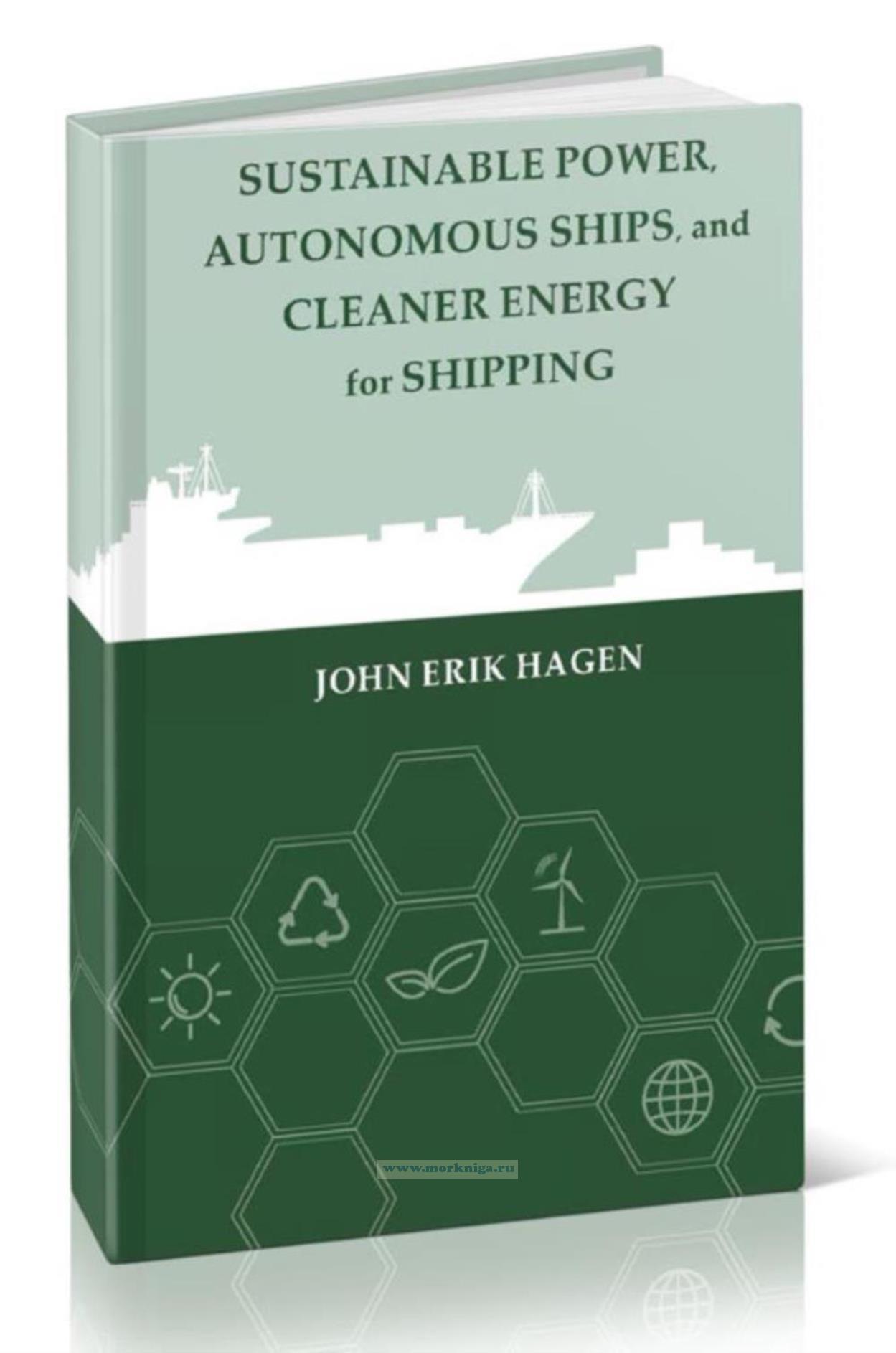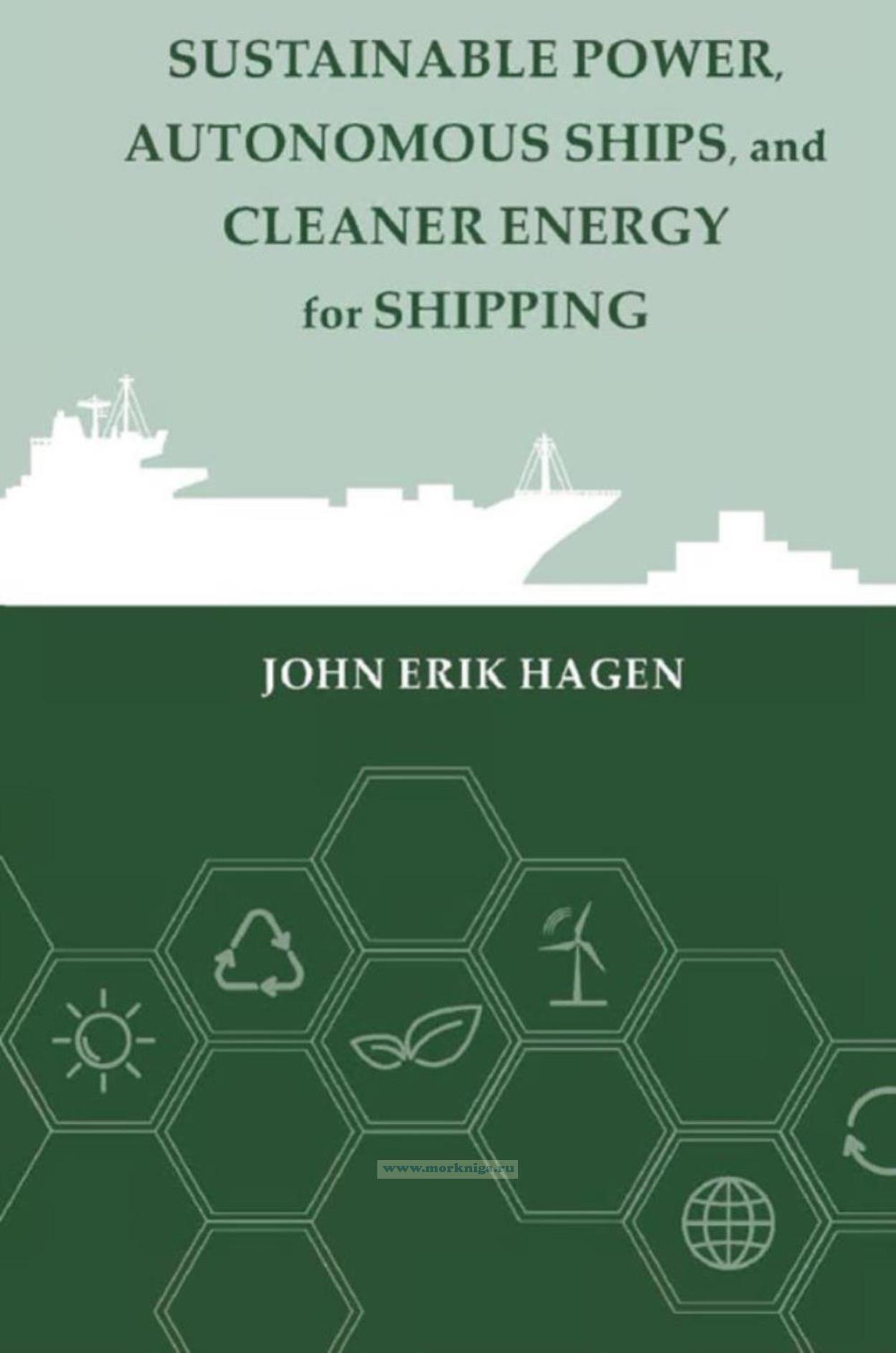Sustainable Power, Autonomous Ships, and Cleaner Energy for Future Shipping/–£—Б—В–Њ–є—З–Є–≤–∞—П –Љ–Њ—Й–љ–Њ—Б—В—М, –∞–≤—В–Њ–љ–Њ–Љ–љ—Л–µ —Б—Г–і–∞ –Є —З–Є—Б—В–∞—П —Н–љ–µ—А–≥–Є—П –і–ї—П –±—Г–і—Г—Й–µ–≥–Њ —Б—Г–і–Њ—Е–Њ–і—Б—В–≤–∞
–Ш–Ј–і–∞–љ–Є–µ –љ–∞ –∞–љ–≥–ї–Є–є—Б–Ї–Њ–Љ —П–Ј—Л–Ї–µ
Shipping is one of many stakeholders competing for use of the oceans; however, ships occupy a significant place for transportation of goods and people around the world. The worldвАЩs oceans provide energy, food, raw materials, trade, employment, and a place to live and to relax. The international shipping industry has both an enormous economic footprint but also a heavy environmental footprint with impacts as well as in the air and water. Protecting the environment is the biggest sustainability challenge for this industry. The focus is on greenhouse gas (GHG) emissions. Although demand for shipping is predicted to grow further, sustainability issues have raised many concerns.
Contents
Acknowledgments
1 Sustainable Shipping, Renewable Energies, and Power Technologies
1.1 Introduction
1.1.1 Climate and Environmental Challenges
1.1.2 Technology Trends
1.1.3 Business Case and Drivers
1.1.4 Reducing Greenhouse Gas Emissions from Ships: IMO 2050 GHG Target
1.1.5 The 2030 Agenda for Sustainable Development
1.1.6 MARPOL
1.1.7 IMO 2020 Requirements for Ships to Cut Sulfur Oxide Emissions
1.1.8 Energy Efficiency Design Index, Ship Energy Efficiency Management Plan, and Energy Efficiency Operational Indicator
1.1.9 Sources for the Propulsion of Ships: An Overview
1.2 Electrical Systems Including Autonomous Ships
1.3 Port Sustainability Initiatives
1.4 Onshore Electrical Power for Ships
1.5 The Way Forward
References
2 Renewable Technology Energy Status and Current Practices for Sustainable Power and Propulsion Arrangements
2.1 Introduction
2.2 Propulsion Technologies
2.2.1 Diesel and Diesel Combinations
2.2.2 Liquid Natural Gas
2.2.3 Liquefied Petroleum Gas
2.2.4 Hydrogen Fuel Cell-Powered Vessels
2.2.5 Ammonia
2.2.6 Biofuels
2.2.7 Wind, Wave, and Solar Energy
2.2.8 Battery-Powered Ships
2.3 The Way Forward
References
3 Autonomous Ships
3.1 Introduction
3.2 Autonomous Ship Description
3.3 Operational Concept and Technologies for Autonomous Navigation
3.4 Legislation
3.5 The Human Element and Training
3.6 Energy Requirements, Emissions, and Fuel Consumption
3.7 The Business Case
3.8 Cyber security
3.9 Port and Coastal Physical Infrastructure
3.10 Insurance
3.11 The Way Forward
References
4 Projects Related to Autonomous Ships
4.1 Background
4.2 Potential Benefits of Electric Autonomy
4.3 Guidelines for the Conduct of Autonomous Ship Trials
4.4 Autonomous Test Areas and Trials of Autonomous Operations
4.5 Sustainable Business Models of Operating within a Total Transport System
4.6 Strategies for Introducing Autonomous Shipping in Maritime Transportation Systems
4.7 Naval Approaches
4.8 The Way Forward
References
5 Gaps in Regulations and Standards for Autonomous Ships
5.1 Introduction
5.2 Review of International Conventions
5.2.1 COLREGs
5.2.2 SOLAS
5.2.3 International Convention on Load Lines 1966 and Tonnage 1969 Convention
5.2.4 STCW and SAR Conventions
5.3 National Traffic Situations Where Traditional Vessels Sail Together with Autonomous Ships
5.4 Standardization and Regulation
5.5 The Way Forward
References
6 The Future
6.1 Introduction
6.2 Future Carbon-Neutral Winners?
6.3 Measures in Ports Toward a Sustainable Future
6.4 Pathways Toward Future Solutions for Sustainable Shipping
6.5 Societal Expectations to Sustainable Solutions
6.6 Post-COVID-19 Pandemic: Opportunities Knock?
6.7 Toward Sustainable Power, Autonomous Ships, and Cleaner Energies
References
About the Author
Index

